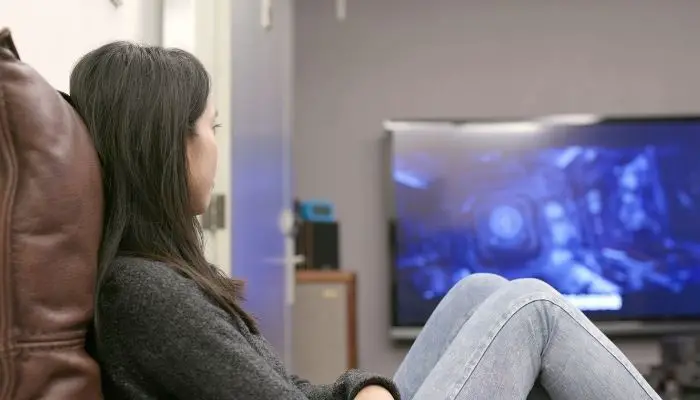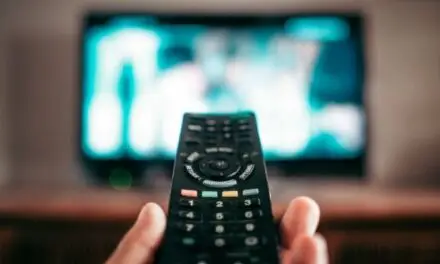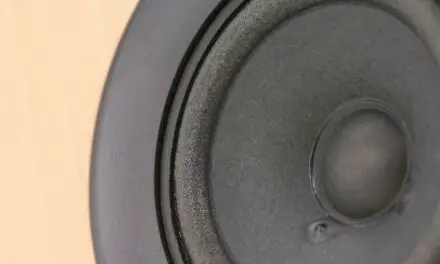Few things are more frustrating than having the speakers on your TV fail.
Unfortunately, the speakers included in today’s super-thin TVs are often pretty flimsy.
They fail pretty regularly, turning your favorite movies into silent films out of nowhere.
But what can you do if this happens and will a soundbar help you hear your TV again?
Table of Contents
Will A Soundbar Work On A TV with No Sound?

Yes, a soundbar will work on a TV that otherwise isn’t producing any sound from the speakers.
Best of all, hooking one up and getting it to work right out of the box is generally pretty straightforward, too.
The great thing about adding a soundbar to your soundless TV is that it does a bit of a “work-around” on your speaker problem completely.
The speakers are essentially deactivated – good news since they’ve died and aren’t working in the first place – and now your TV is going to pump the sound signal into your soundbar instead.
How To Connect A Soundbar To A TV With No Sound
To kick things off, though, you need to make sure that you have set up your soundbar correctly.
You’re going to need to use at least one of a couple of different connection options available to tell your TV to reroute the sound signal from the internal speakers to the bar itself.
Here are some of the most popular ways to do exactly that!
HDMI
If you have a high-end soundbar, be sure to use HDMI to connect it to your TV.
HDMI will support all the top-end audio features of your soundbar and give you the very best sound quality.
While other methods, like optical or HDMI ARC, may lower sound quality.
HDMI is essentially the “gold standard” for TV hookups today
It carries audio and video signals in a single wire and has enough bandwidth to handle HD signals (including 4K and higher, even).
There are a couple of different versions of HDMI out there right now (2.1 is the most recent) and all of them are backward compatible.
The only thing you have to focus on when hooking up your soundbar to your television via HDMI is that you are connecting through the right ports.
A lot of people like to hook up their soundbar to a soundless TV through HDMI Port One.
This guarantees that the soundbar is set up correctly and that it’s going to be able to feed audio from all of the other sources that are connected to your TV.
If you have your television hooked up to a media hub or receiver you’ll need to tinker with this setup a little bit.
Just make sure that your audio out is being routed through your soundbar and you should be all set.
Double confirm that your TV settings are configured to output to your soundbar as well through the internal menu.
Now you should be good to go!
Related Article: Can A Smart TV Record You? (All You Need To Know)
HDMI ARC
HDMI ARC operates a little differently than traditional HDMI, but you only have to be careful that all of your sources are going into a singular “hub” before moving through your HDMI ARC-connected equipment.
Televisions equipped with HDMI ARC slots are specifically designed to be used with things like soundbars and surround sound equipment.
Make sure that you shuffle any other inputs/outputs connected to that HDMI slot into other spaces to make room for your soundbar, though.
This is a dedicated spot for Audio Return Channel (ARC) equipment, after all.
Bluetooth Connection
Connecting over Bluetooth may be another option, especially if all of your HDMI spots are taken up with other media sources or hardware components.
Again, though, you’ll need to make sure that you have reconfigured your television settings to output audio over Bluetooth if you’re going to go down this direction.
You’ll also want to make sure that you keep your soundbar relatively close to your TV if connecting wirelessly.
The last thing you want to do is weaken the signal, cause potential disconnections, and distort the audio being transmitted from your otherwise soundless TV to your new soundbar equipment.
Optical Cable
An optical cable is a great plug-and-play option that’s easy to set up.
Plug the optic cable into the “Digital Audio Out Optical” connection on the back of your TV.
Before you plug the other end into your soundbar make sure there is a red light shining through the end of the cable.
If there is no red light then no signal is coming through.
Once the red light is visible plug the other end of the cable into the optical digital audio input on your soundbar.
Tap the source or function button on your soundbar until you get to digital input.
Next, you’ll need to go into the sound settings on your TV and change the sound out from the TV speaker to the external speaker.
What If Sound Won’t Play Through My Soundbar?
If you’ve set up your soundbar on your TV and no sound will play through it, there are a few things you can try to get it working.
Your TV Might Be Too Old
If your TV was manufactured before 2008 there’s a good chance it’s not compatible with your soundbar and won’t play audio through it.
To find out when your TV was manufactured, have a look for the label, which should contain other information, like the model number and location where it was made.
Check Your TV Audio Settings
If your TV has not been manufactured before the beginning of 2008 and you’re still having difficulty trying to set up a soundbar, you’ll want to check the TV audio settings.
If your audio settings are not correct and you have a soundbar connected, your HDMI source input may not pass through the digital output.
And this can sometimes be the case when your TV speakers are set to on.
Try going into the sound settings on your TV, deselect your TV speaker as audio output, and select external speaker as audio output instead.
Try Changing Audio Out From PCM To Bitstream
Selecting PCM, bitstream or some other audio output will determine how your TV processes sound.
You may need to try them all out to see which one works for your TV and soundbar.
Locate “Digital Audio Out” in your TV’s sound settings and from here you will be able to change between PCM, bitstream, and any other audio out options your TV may have.
Try out each of them to see if they can get your soundbar to work.
Try An Analog Connection
See if you have the cable to connect the soundbar to your TV through the red and white audio out analog connection on the back of your TV.
You can also try using a stereo cable to connect your soundbar to the TV through the headphone jack connection.
Are There Any Other Benefits To Upgrading To A Soundbar On Your TV?
Apart from hearing sound on your soundless TV, there are a couple of benefits to upgrading to a soundbar from internal speakers, too.
Better Sound Quality
For starters, you’re able to get a much deeper, much richer, and much more complete audio experience out of even the least expensive soundbars today compared to internal speakers.
You might not get full surround sound out of a budget-focused soundbar, but it should still improve upon internal speakers and you can upgrade your overall audio experience in a big way without spending loads.
And if you splash out on a quality one, like a good Sonos or Samsung soundbar, you’ll be treated to some of the best audio quality you’ll hear from any TV.
A Soundbar Can Act As An Entertainment Hub
Secondly, you can use your soundbar as a central hub of sorts for all your entertainment.
You can stream media from your phone, tablet, and computer through the soundbar when you don’t have the TV on.
That shows just how versatile these pieces of equipment are!
Conclusion
Just because your TV isn’t putting out sound anymore through the internal speakers doesn’t necessarily mean that it is useless.
Connect a soundbar correctly (using the tips above) and you’ll be rocking and rolling with your HDTV faster than you would have thought possible!



